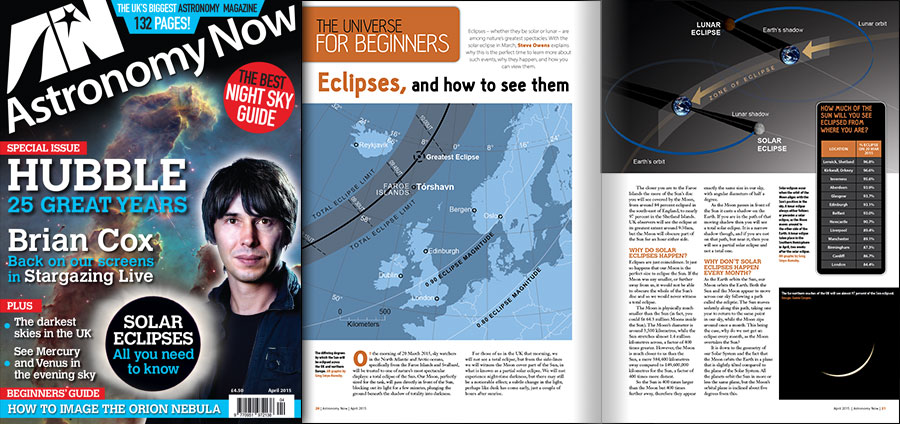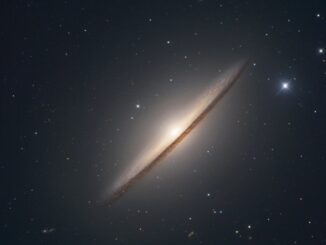
Solar eclipses are relatively rare; they happen when the Moon moves directly and precisely in front of the Sun. Why are they so infrequent, and why do solar eclipses always come in pairs with lunar eclipses?
It is all down to a mix of orbital alignments and cosmic coincidences. The Moon is able to cover the Sun’s disc precisely because the Sun is about 400 times bigger than the Moon, and also about 400 times further away, meaning they have the same size in our sky. That’s a huge coincidence! With all that sky above our heads though, what causes the Sun and the Moon to be in the same position in the sky at the same time?
It’s all a question of orbits. Earth orbits the Sun along a plane that we call the ecliptic – all of the planets orbit along this plane, more or less. The Moon, however, orbits Earth at an angle that is tilted to the ecliptic, by about five degrees. This means that on each orbit around Earth (a lunar orbit lasts 27 days), the Moon only crosses the ecliptic at two locations and these are the only two opportunities for an eclipse, be it a solar or a lunar eclipse.

Now, an eclipse of either variety can only happen when the Sun, Moon and Earth are in a line. Usually, the Moon crosses the ecliptic when they are not in a line, so we do not see an eclipse. However, on odd occasions – roughly once every 18 months on average – the Moon crosses the ecliptic at a time when it is aligned with Earth and the Sun. If this crossing takes place when the Moon is between Earth and the Sun, we see a solar eclipse. Two weeks later the Moon moves to the other side of Earth, with the alignment still the same, causing the Moon to slip into Earth’s shadow. Here on Earth, we see a lunar eclipse.
So solar and lunar eclipses always come in pairs. This year, following the dramatic total solar eclipse on 20 March, a total lunar eclipse will occur on the night of 4/5 April, which will be visible from the Southern Hemisphere, in particular Australia and New Zealand.
Inside the magazine
In the April 2015 issue of Astronomy Now, find out everything you need to know about eclipses. Also this month, we go behind the scenes at Stargazing Live and celebrate 25 years of the Hubble Space Telescope.
Get your copy in the shops or order online. Never miss an issue by subscribing to the UK’s biggest astronomy magazine. Also available for iPad/iPhone and Android devices.




